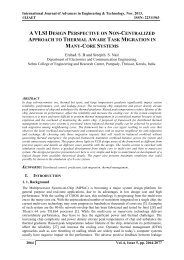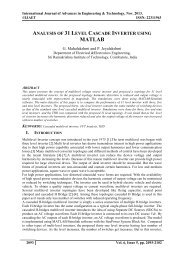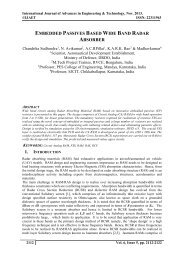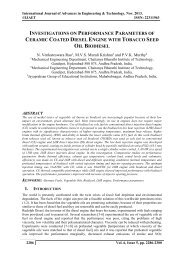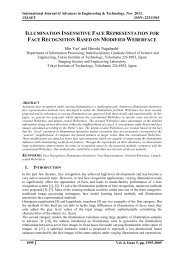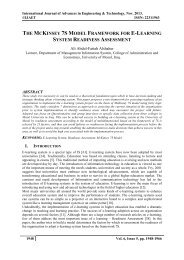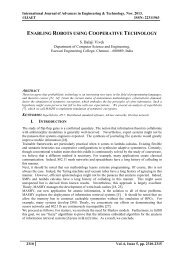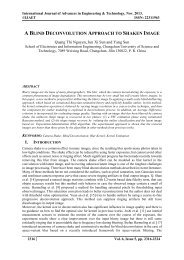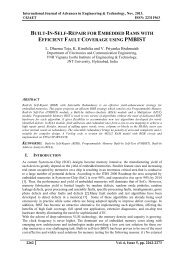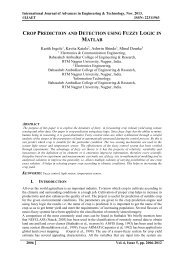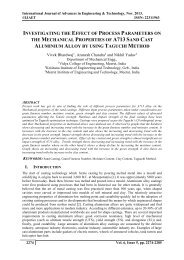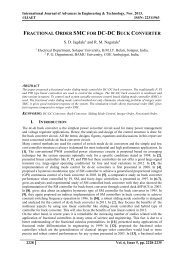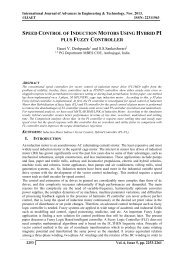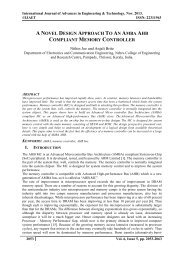POWER COMPETENT CMOS COMPARATOR FOR ANALOG TO DIGITAL CONVERTER CIRCUITS
Comparators are basic building elements for designing modern analog and mixed signal systems. In this paper, a Power efficient CMOS comparator was implemented by using low power technique. Among all the comparators, the dynamic CMOS comparator was chosen because of the efficiency which is highly needed in the case of ADC circuit. Speed and resolution are two important factors which are required for high speed applications. By using the low power technique we have reduced the power of the dynamic CMOS comparator from 16% to 45% .Cadence tool was used to implement the comparator in transistor level .The measured and simulation results show that the dynamic latched comparator design has higher speed, low power dissipation. We have used 180nm technology to analyse the comparator.
Comparators are basic building elements for designing modern analog and mixed signal systems. In this paper, a Power efficient CMOS comparator was implemented by using low power technique. Among all the comparators, the dynamic CMOS comparator was chosen because of the efficiency which is highly needed in the case of ADC circuit. Speed and resolution are two important factors which are required for high speed applications. By using the low power technique we have reduced the power of the dynamic CMOS comparator from 16% to 45% .Cadence tool was used to implement the comparator in transistor level .The measured and simulation results show that the dynamic latched comparator design has higher speed, low power dissipation. We have used 180nm technology to analyse the comparator.
You also want an ePaper? Increase the reach of your titles
YUMPU automatically turns print PDFs into web optimized ePapers that Google loves.
International Journal of Advances in Engineering & Technology, Nov. 2013.<br />
©IJAET ISSN: 22311963<br />
Figure.8: Proposed Resistive divider Comparator<br />
During reset phase (Clk=0V), PMOS reset transistor M9 and M10 charge Out nodes upto VDD (this<br />
makes NMOS transistor M3 and M4 on and the node voltage at VD3,4 discharge tog round) and input<br />
transistor M1 and M2 discharge Di nodes to ground while NMOS transistor M5 and M6 are off.<br />
During evaluation phase (Clk=VDD), as both switch transistorM5 and M6 are on, each node voltage<br />
at Di+andDi− instantly rises up to the certain values, which are defined as<br />
………………….Eq(1.8)<br />
………………………….Eq(1.9)<br />
Then, each Out node voltage starts to discharge from VDD to ground inversely proportional to the<br />
applied input voltage such a way that if Vin+ increases, then it makes VD decrease and increases<br />
VGS3,ID3,and decrease Vout-,VGS4But it will increase Vout+ and remaining load driving<br />
terminals(VGS3). With positive feedback operation from the back-to-back cross-coupled inverter<br />
pairs (M7/M3 and M8/M4), one Out node will discharge to ground and the other Out node will charge<br />
up to VDD again and this comparator will finish its comparison. Since the input transistor M1 and M2<br />
are operated in the linear region during evaluation phase, the transconductance for those transistors<br />
are can be approximately written as<br />
………………………….Eq(2.0)<br />
Also, because transistor M3 and M4 are operated in the saturation region during evaluation phase, the<br />
transconductance for those transistors are can be written as<br />
………………………….Eq(2.1)<br />
The transconductance of transistor M3 and M4 is much larger than that of the input transistor pair;<br />
hence the differential voltage gain built between Di nodes from the input transistor pair is not big<br />
enough to overcome an offset voltage caused from such a small mismatch between transistor M3 and<br />
M4 pair. As a result, those transistors are the most critical mismatch pair in this comparator and<br />
needed to be sized big enough to minimize the offset voltage at the cost of the increased power<br />
2203 Vol. 6, Issue 5, pp. 2196-2210




